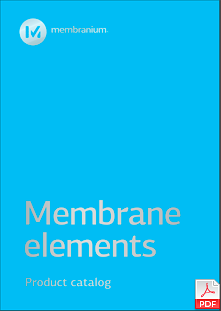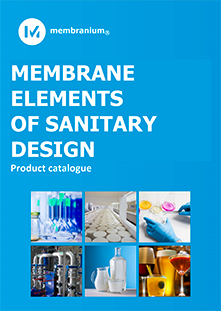
For the dairy and food industries

For the dairy and food industries
"Membranium" reverse osmosis spiral-wound membrane elements in sanitary design are made of special polymeric materials that provide optimal operating conditions
The pores in "Membranium" spiral-wound reverse osmosis membrane elements of sanitary design are very small (less than 60 Å), therefore only water with a minimum content of inorganic salts can pass through them. Also, in a limited volume, organic low-molecular substances can pass through the membrane. All other substances, for example, sugars, proteins, salts of organic acids, will be retained by the membrane.
- Concentration of milk / whey prior to the drying process. Whey, left over from the production of cheese or curd is one of the main sources of protein available today. Whey makes up 90% of the total processed milk and contains about 50% of the components of the original milk: dissolved protein, lactose, vitamins and minerals. To reduce drying costs, the milk whey is pre-concentrated.
- Concentration of herbal medicinal extracts with a low content of suspended particles;
- Purification of whey nanofiltration permeate to obtain pure water
- Beverage production (coffee extract, chicory);
- Concentration of juice
- Concentration of skim milk
- Concentration of egg white
- Concentration of blood plasma

 English
English  Русский
Русский  中國
中國  Español
Español 



